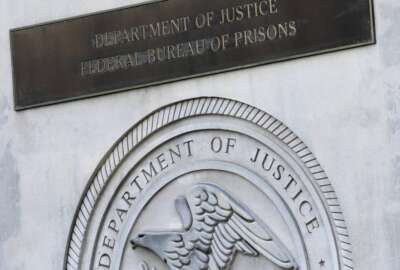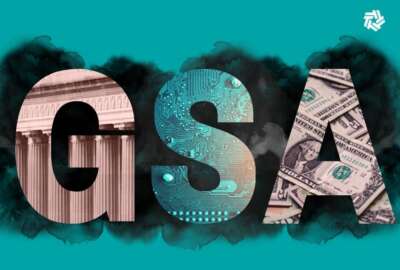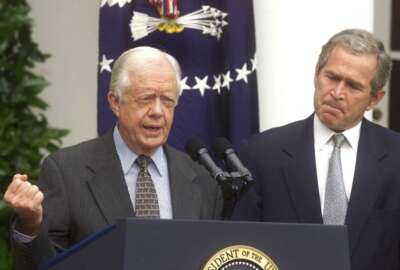USGS feds unshaken by D.C. earthquake
As a magnitude 3.6 quake struck the D.C. area just a few minutes past 5 a.m. this morning, the USGS stood ready within moments with answers. Geophysicist Jessica...
wfedstaff | June 3, 2015 8:44 am
By Suzanne Kubota
Senior Internet Editor
FederalNewsRadio.com
This morning, when the area got a wake up call in the form of a small earthquake, Washingtonians turned, as all citizens do at times like these, to the federal government for answers.
Jessica Sigala, a geophysicist with the U.S. Geological Survey in Denver, told Federal News Radio she was on duty, just like every day, when the quake hit.
“We are staffed 24 hours a day, seven days a week. There is somebody here all the time. So when an earthquake happens we are able to locate it and figure out how big it is magnitude-wise pretty quickly, because we’re here and so we know it happens right away.”
Within minutes, the USGS determined this morning’s quake was a magnitude 3.6 and was located at 39.167°N, 77.252°W, or near Gaithersburg, Maryland and was 3.1 miles below ground.
The numbers don’t tell the whole story, said Sigala. Within minutes of the quake, people as far away as Pennsylvania and West Virginia reported feeling the quake on the U.S. Geological Survey’s website.
Sigala explained that a 3.6 quake may feel very different on the east coast than on the west. The reason, she said, is “bedrock is way different” on each coast. The west coast, with its mountains, has a lot of bedrock to absorb the shock. On the east coast, said Sigala “you don’t have that. When something shakes, it goes everywhere, so we’re seeing it being felt pretty much all over Maryland.”
Aftershocks from the quake can be expected for days, said Sigala, because of the relatively shallow nature of this quake.
D.C. emergency services says that no damage has been reported due to the quake. All metro buses and metro trains are running as scheduled.
Since the last quake within 20 miles of this epicenter was a magnitude 2.0 in May of 2008, Sigala said data from this morning’s quake will help to determine fault lines in the area. Because quakes in the D.C. area are relatively rare, “we don’t know the fault structures very well and so when we do get earthquakes like this, they do help us identify those faults.”
Talking with the Federal Drive just barely an hour after the quake hit initially, Sigala sounded still excited, and more than a bit grateful for the chance to do a job she loves.
In my job, specifically, I’m able to help people out. We locate the earthquakes and we can tell people what’s going on right away. So that if it is a large earthquake and aftershocks are a possibility, we’re able to tell people to be careful. And if it’s in a coastal area, like with the Chile earthquake, we’re able to tell people “Oh there may be a tsunami, so you should prepare yourself this way.” I like being able to help the world out.
Federal News Radio has been looking at all kinds of Cool Jobs in Government, like Sigala’s, all week. For more about our series, click here.
For more local coverage of the D.C. quake, check out WTOP.com.
(Copyright 2010 by Federal News Radio. All Rights Reserved.)
Copyright © 2025 Federal News Network. All rights reserved. This website is not intended for users located within the European Economic Area.





